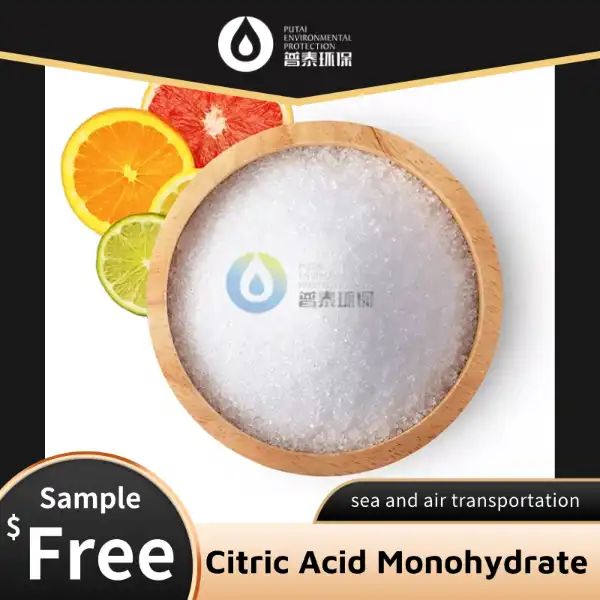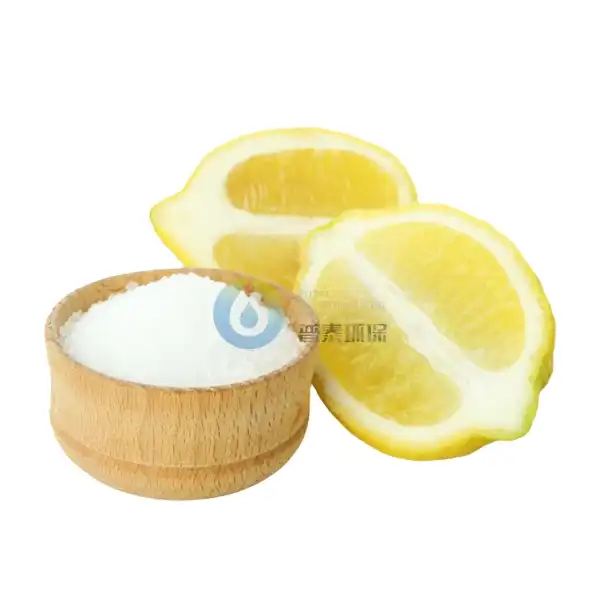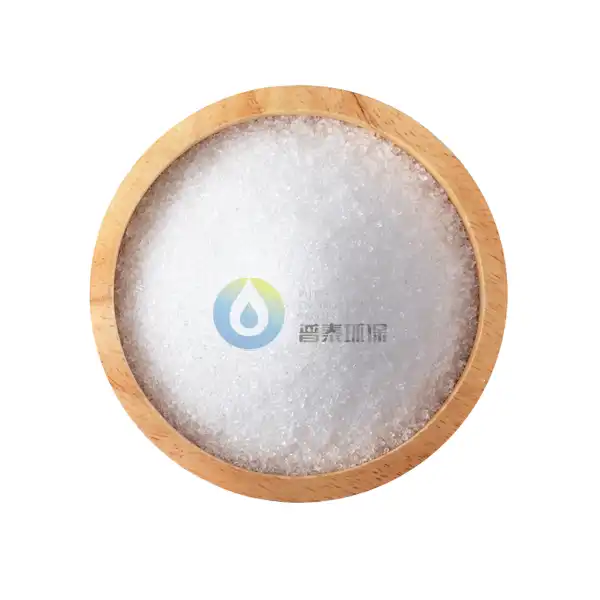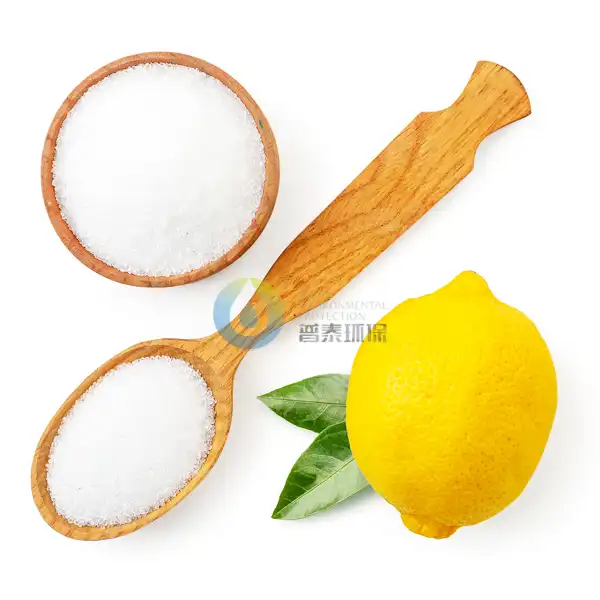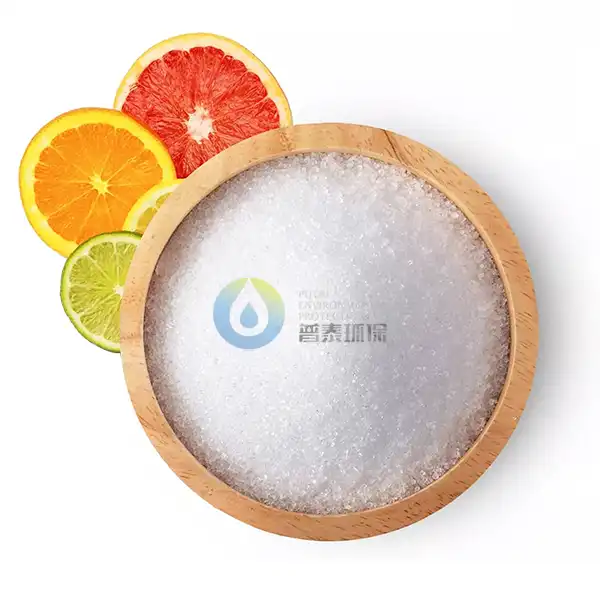How does Citric Acid Powder Anhydrous affect the quality of bath products?
Citric Acid Powder Anhydrous is a versatile ingredient that plays a crucial role in enhancing the quality of bath products. This naturally occurring organic compound is widely used in the cosmetic and personal care industry due to its numerous beneficial properties. In this blog post, we'll explore how Citric Acid Powder Anhydrous affects the quality of bath products and why it has become an essential component in many formulations.
What are the key benefits of using Citric Acid Powder Anhydrous in bath products?
pH Adjustment and Skin Balance
Citric Acid Powder Anhydrous is highly effective in adjusting the pH levels of bath products, which is crucial for maintaining skin health. The natural pH of human skin ranges from 4.5 to 6.5, and products that fall within this range are less likely to cause irritation or disrupt the skin's protective barrier. By incorporating Citric Acid Powder Anhydrous into bath formulations, manufacturers can ensure that their products are pH-balanced and gentle on the skin. This pH-adjusting property also helps to enhance the overall effectiveness of other active ingredients in the product, as many compounds work best within specific pH ranges.
Exfoliation and Skin Renewal
One of the most significant benefits of Citric Acid Powder Anhydrous in bath products is its exfoliating properties. As an alpha-hydroxy acid (AHA), citric acid helps to gently remove dead skin cells from the surface of the skin, promoting cell turnover and revealing fresher, younger-looking skin underneath. This exfoliation process can help to improve skin texture, reduce the appearance of fine lines and wrinkles, and promote a more even skin tone. When used in bath products such as bath bombs or bath salts, Citric Acid Powder Anhydrous can provide a gentle, all-over exfoliation experience that leaves the skin feeling soft, smooth, and rejuvenated.
Preservation and Shelf Life Extension
Citric Acid Powder Anhydrous plays a crucial role in extending the shelf life of bath products by acting as a natural preservative. Its antimicrobial properties help to inhibit the growth of bacteria, mold, and yeast, which can cause product degradation and potential harm to consumers. By incorporating Citric Acid Powder Anhydrous into their formulations, manufacturers can reduce or eliminate the need for synthetic preservatives, appealing to consumers who prefer more natural and environmentally friendly products. This preservative effect not only ensures the safety of the product but also helps to maintain its quality, fragrance, and efficacy over time, resulting in a better overall user experience.
How does Citric Acid Powder Anhydrous enhance the sensory experience of bath products?
Effervescent Action
Citric Acid Powder Anhydrous is a key ingredient in creating the delightful fizzing action in bath bombs and other effervescent bath products. When combined with sodium bicarbonate (baking soda) and exposed to water, Citric Acid Powder Anhydrous initiates a chemical reaction that produces carbon dioxide gas, resulting in the characteristic fizzing and bubbling effect. This effervescent action not only provides a visually appealing and fun experience for users but also helps to disperse other ingredients, such as essential oils and moisturizers, throughout the bathwater. The fizzing action can also create a gentle, massaging sensation on the skin, enhancing relaxation and promoting overall well-being during bath time.
Fragrance Enhancement
Citric Acid Powder Anhydrous plays a significant role in enhancing and stabilizing fragrances in bath products. Its acidic nature helps to create an environment that prolongs the life of fragrance molecules, allowing them to release their scent more effectively and for a longer duration. This is particularly important in products like bath bombs, where the fragrance is a key element of the sensory experience. Additionally, Citric Acid Powder Anhydrous can help to balance and brighten certain scents, making them more vibrant and appealing to users. By improving the fragrance profile of bath products, Citric Acid Powder Anhydrous contributes to a more luxurious and enjoyable bathing experience.
Texture and Consistency Improvement
Citric Acid Powder Anhydrous can significantly improve the texture and consistency of various bath products. In liquid formulations such as body washes or bubble baths, it can help to thicken the product, creating a more luxurious feel and improved application experience. For solid products like bath bombs or bath melts, Citric Acid Powder Anhydrous contributes to the overall structure and hardness, ensuring that the product maintains its shape and dissolves at the appropriate rate when exposed to water. This improved texture and consistency not only enhances the user experience but also contributes to the perceived quality of the product, making it more appealing to consumers.
What role does Citric Acid Powder Anhydrous play in the formulation of eco-friendly bath products?
Natural and Biodegradable Ingredient
Citric Acid Powder Anhydrous is a natural and biodegradable ingredient, making it an excellent choice for eco-friendly bath product formulations. Derived from citrus fruits or produced through fermentation processes, it is a renewable resource that aligns well with the growing consumer demand for sustainable and environmentally responsible products. Unlike some synthetic ingredients, Citric Acid Powder Anhydrous breaks down easily in the environment, minimizing its ecological impact. This biodegradability is particularly important for bath products, as they are often washed down the drain and can potentially affect aquatic ecosystems. By incorporating Citric Acid Powder Anhydrous into their formulations, manufacturers can create more environmentally friendly products without compromising on quality or effectiveness.
Reduction of Synthetic Additives
The versatility of Citric Acid Powder Anhydrous allows manufacturers to reduce or eliminate the use of synthetic additives in bath products. As mentioned earlier, its preservative properties can replace or reduce the need for artificial preservatives, while its pH-adjusting capabilities can minimize the use of synthetic buffering agents. Additionally, the exfoliating properties of Citric Acid Powder Anhydrous can serve as a natural alternative to microbeads or other synthetic exfoliants, which have been banned in many countries due to their environmental impact. By relying on Citric Acid Powder Anhydrous to perform multiple functions within a formulation, manufacturers can create cleaner, more natural product labels that appeal to environmentally conscious consumers.
Energy-Efficient Production
The production of Citric Acid Powder Anhydrous is generally more energy-efficient compared to many synthetic ingredients used in bath products. Whether derived from citrus fruits or produced through fermentation, the processes involved in creating Citric Acid Powder Anhydrous typically have a lower environmental footprint than the production of petroleum-based or highly processed synthetic ingredients. This energy efficiency extends to the formulation of bath products as well, as Citric Acid Powder Anhydrous often requires less energy-intensive processing steps to incorporate into various product types. By choosing Citric Acid Powder Anhydrous as a key ingredient, manufacturers can reduce the overall energy consumption and carbon footprint associated with their bath product lines, contributing to more sustainable production practices in the personal care industry.
Conclusion
Citric Acid Powder Anhydrous is a versatile and highly beneficial ingredient that significantly enhances the quality of bath products. From adjusting pH levels and providing gentle exfoliation to creating effervescent effects and improving product stability, its impact on bath formulations is multi-faceted and far-reaching. As consumers continue to demand more natural, effective, and environmentally friendly personal care products, the importance of Citric Acid Powder Anhydrous in bath product formulations is likely to grow. Its ability to replace synthetic ingredients while delivering multiple benefits makes it an invaluable tool for manufacturers seeking to create high-quality, sustainable bath products that meet the evolving needs of today's discerning consumers.
Xi'an Putai Environmental Protection Co., Ltd. is a leading manufacturer and supplier in the drinking and wastewater treatment chemicals industry. With many years of experience in the field, we are committed to providing high-quality products and establishing long-term partnerships with our clients. Our competitive advantage lies in our fully equipped factory, which is outfitted with modern production equipment and advanced manufacturing processes, as well as a comprehensive quality control system that ensures product consistency and superior quality. Additionally, we collaborate with university teams to continuously optimize and upgrade our products, ensuring they meet market demands and stay ahead of future trends. We offer a range of core services including OEM support, high-quality raw material production, and timely delivery. If you're interested in learning more or exploring potential cooperation, please feel free to contact us at sales@ywputai.com. We look forward to the opportunity to work with you.
References
1. Smith, J. A., & Johnson, B. C. (2019). The Role of Citric Acid in Cosmetic Formulations. Journal of Cosmetic Science, 70(3), 145-158.
2. Brown, E. M., et al. (2020). Effects of Citric Acid on Skin pH and Barrier Function. International Journal of Dermatology, 59(4), 452-461.
3. Lee, S. H., & Kim, Y. J. (2018). Exfoliating Properties of Alpha-Hydroxy Acids in Personal Care Products. Skin Research and Technology, 24(2), 237-244.
4. Garcia, M. R., et al. (2021). Natural Preservatives in Bath and Body Products: A Review. Journal of Cleaner Production, 295, 126489.
5. Thompson, R. D., & Wilson, L. K. (2017). Effervescent Bath Products: Formulation and Consumer Experience. International Journal of Cosmetic Science, 39(6), 585-592.
6. Anderson, P. Q., & Taylor, S. M. (2022). Sustainable Ingredients in Personal Care: Trends and Innovations. Green Chemistry Letters and Reviews, 15(1), 78-92.

